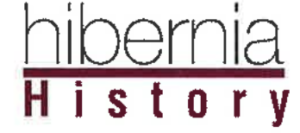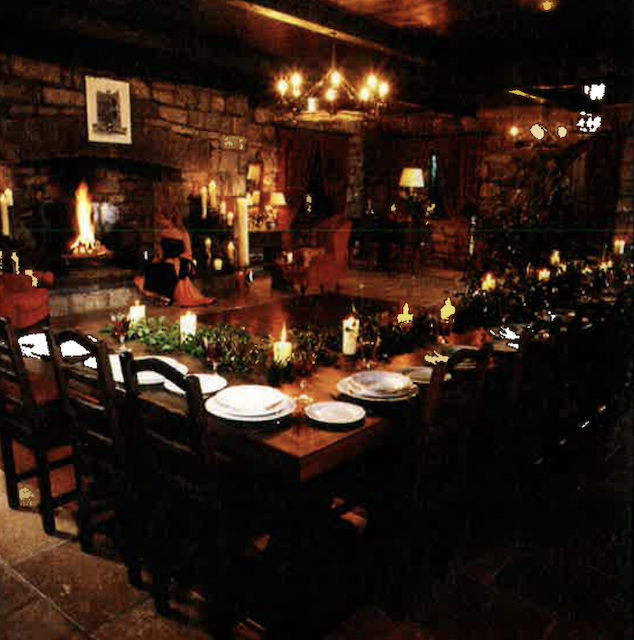 Take a long look and it’s easy to imagine yourself in the heart of some Irish Camelot. Overlooking the rolling green countryside between Gort and Galway city, Cloghan Castle is one of the finest examples of the restoration of Ireland’s numerous castles and old houses.
Take a long look and it’s easy to imagine yourself in the heart of some Irish Camelot. Overlooking the rolling green countryside between Gort and Galway city, Cloghan Castle is one of the finest examples of the restoration of Ireland’s numerous castles and old houses.
For centuries this 12th century Norman fortress stood in ruins — like many other historic sites in Ireland. But thanks to the single-minded dedication of Galway businessman Michael Burke and his wife Mary, Cloghan Castle has been magnificently restored to its former glory. And not only have they lovingly brought it back virtually inch perfect — with its six-foot-thick granite walls, circular turrets and battlements — they have brilliantly incorporated the sort of luxurious, warm interior that any five-star hotel would envy.
Centrally heated throughout, the old banqueting room now comfortably seats 120 for dinners and conferences. What’s extraordinary is that all this state-of-the-art luxury has been achieved without losing any of the history that Cloghan exudes from every battle turret. They have also added a further 6,000 square feet and extended the height by 35 feet.
“I had always felt strongly about so much of Ireland’s heritage disappearing,” says Burke. “There were castles steeped in history, not only in Galway but throughout the country, that were lying in ruins. No one seemed to be doing much about them. I had known the ruins of Cloghan Castle all my life. But in 1973, Mary and I decided to buy it and take it on. At least we’d be making the effort. Our primary aim was to bring a little bit of history back to life.
“We did a lot of meticulous research to ensure historical accuracy so that the castle would be brought back as closely as possible to the original. Working from the few documents and pictures we could find, the workmen spent countless hours cementing stones in exactly the way we believed the original was constructed.”
As the Burkes got down to the nitty-gritty of their restoration work, they became increasingly engrossed in the detail and history of the castle. They discovered the castle was originally a Norman fort built in the 12th century and last occupied 300 years later. It was referred to in the Book of Kilmacdoo as occupied by Hubert de Burgo, a member of one of Ireland’s most ancient and influential families-his father was Walter de Burgo, Earl of Ulster. Towards the end of the Norman era, the castle was abandoned and slowly deteriorated into ruin. Burke is reluctant to talk about the renovation costs, but he has clearly spent a small fortune to realize this dream.
The property itself is approached by a private avenue leading to a semi-circular parking area outside the boundaries of the external fortification. The internal area is spotlighted, fully-illuminating the castle. There are seven bedrooms, each with its own personality and décor. One of the outstanding characteristics is an original 800-year-old fireplace in one of the bedrooms.
A winding 90-step stairway connects the various levels. To make up for the restricted lighting from the traditional narrow windows, the castle is brightly lit by a first-class internal lighting system. The interior is largely constructed of natural stone walls, wood beamed ceilings and stone or wooden floors.
Now the Burkes can finally enjoy the fruits of their labor. This modern-day Camelot has it all — hunting with the Galway Blazers, an angler’s paradise on Lough Corrib, golf, shooting, swimming, tennis, sailing, wind surfing and trekking all within a stone’s throw. And if visitors want more castles, there are plenty to be found in the surrounding country: Yeats’ Castle, Lough Cutra, Tulira, Coole Park and many more. No shortage either of high-quality restaurants nearby.
So what will this little piece of heaven cost for a historically minded family who enjoy their creature comforts? The going rate is $4,500 a week from May to August and a mere $4,000 a week for the rest of the year. The millennium is also still up for grabs, so if you’re inclined to ring in the new century with a trip to the past call Michael Burke at 011-353-91-841788.♦
Editor’s Note: This article was originally published in the January 2000 issue of Irish America.


Leave a Reply